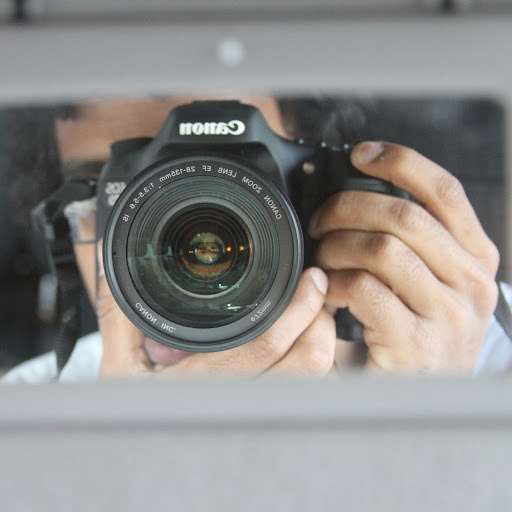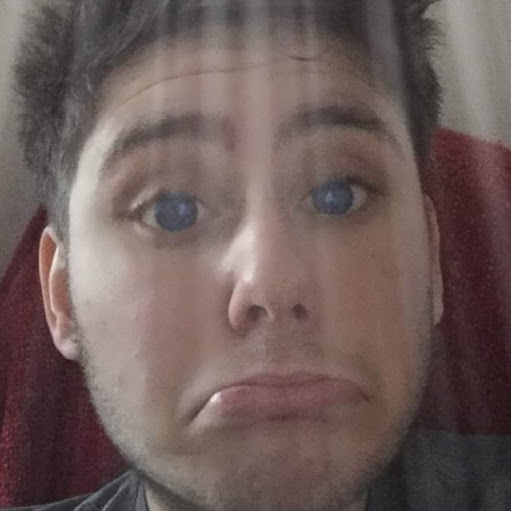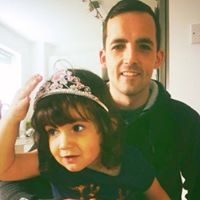David Paul Lawlor
age ~61
from Canonsburg, PA
- Also known as:
-
- David P Lawlor
- David L Lawlor
- David W Lawlor
- David Lawler
- Dave Lawlor
- David F
- Daniel D
- Phone and address:
-
707 Crossbow Ct, Canonsburg, PA 15317
7249416654
David Lawlor Phones & Addresses
- 707 Crossbow Ct, Canonsburg, PA 15317 • 7249416654
- McMurray, PA
- Philadelphia, PA
- 8847 Fenton Ct, Elk Grove, CA 95624 • 9166707506 • 9166854432
- Walnut Creek, CA
- Hudson, OH
- Bolingbrook, IL
- Miami, FL
Resumes

Managing Member
view sourceIndustry:
Financial Services
Work:
Philadelphia Financial Life Assurance Company Jun 1995 - Jun 1998
Vice President
Cmg Jun 1995 - Jun 1998
Managing Member
Vice President
Cmg Jun 1995 - Jun 1998
Managing Member
Education:
Miami University 1980 - 1984
Skills:
Teaching
Microsoft Office
Microsoft Word
Powerpoint
Research
Microsoft Excel
English
Public Speaking
Negotiation
Customer Service
Strategic Planning
Windows
Outlook
Budgets
Microsoft Office
Microsoft Word
Powerpoint
Research
Microsoft Excel
English
Public Speaking
Negotiation
Customer Service
Strategic Planning
Windows
Outlook
Budgets

General Partner
view sourceIndustry:
Financial Services
Work:
Philadelphia Financial Life Assurance Company Feb 1996 - Jun 1999
Vice President
Boundary Bay Capital Feb 1996 - Jun 1999
General Partner
Vice President
Boundary Bay Capital Feb 1996 - Jun 1999
General Partner
Education:
Miami University 1980 - 1984
Bachelors, Bachelor of Science, Finance
Bachelors, Bachelor of Science, Finance
Skills:
Turnaround Experience
Crisis Management
Chapter 11 Process
Negotiation
Real Estate
Team Leadership
Financial Modeling
Strategic Planning
Public Speaking
Microsoft Office
Microsoft Excel
Microsoft Word
Customer Service
Powerpoint
English
Windows
Research
Outlook
Teaching
Budgets
Crisis Management
Chapter 11 Process
Negotiation
Real Estate
Team Leadership
Financial Modeling
Strategic Planning
Public Speaking
Microsoft Office
Microsoft Excel
Microsoft Word
Customer Service
Powerpoint
English
Windows
Research
Outlook
Teaching
Budgets
Languages:
English

Director Of Business Development
view sourceLocation:
Pittsburgh, PA
Industry:
Information Technology And Services
Work:
Prov International
Director of Business Development
Director of Business Development
Education:
University of Pittsburgh 1982 - 1986
Skills:
Professional Services
Information Technology
Information Technology

David P Lawlor
view sourceLocation:
707 Crossbow Ct, Mcmurray, PA 15317
Industry:
Computer Software
Skills:
C++
Linux
Opengl
Qt
Strategic Planning
Unix
C
Software Development
Debugging
Software Engineering
Distributed Systems
Perl
Linux
Opengl
Qt
Strategic Planning
Unix
C
Software Development
Debugging
Software Engineering
Distributed Systems
Perl
Languages:
English

David Lawlor
view source
David Lawlor
view source
David Lawlor
view source
David Lawlor
view sourceLocation:
United States
Medicine Doctors

David P. Lawlor
view sourceSpecialties:
Ophthalmology
Work:
Lawlor & Saparoff Mds
212 Prouty Dr STE 2, Newport, VT 05855
8023348002 (phone), 8023349136 (fax)
212 Prouty Dr STE 2, Newport, VT 05855
8023348002 (phone), 8023349136 (fax)
Education:
Medical School
University of Vermont COM
Graduated: 1994
University of Vermont COM
Graduated: 1994
Languages:
English
Description:
Dr. Lawlor graduated from the University of Vermont COM in 1994. He works in Newport, VT and specializes in Ophthalmology. Dr. Lawlor is affiliated with North Country Hospital.

David F. Lawlor
view sourceDescription:
Dr. Lawlor graduated from the Dartmouth Medical School in 1987. He works in Newton Lower Falls, MA and 2 other locations and specializes in Pediatric Surgery. Dr. Lawlor is affiliated with Massachusetts General Hospital and Newton-Wellesley Hospital.
License Records
David Peter Lawlor Md
License #:
3908 - Expired
Category:
Medicine
Issued Date:
Jul 1, 1998
Effective Date:
Aug 17, 1999
Expiration Date:
Jul 1, 1999
Type:
Temporary Educational Permit
Isbn (Books And Publications)

Plant Growth: Interactions With Nutrition and Environment
view sourceAuthor
David W. Lawlor
ISBN #
0521361338

Photosynthesis: Molecular, Physiological and Environmental Processes
view sourceAuthor
David W. Lawlor
ISBN #
0387916075


Photosynthesis: Molecular, Physiological and Environmental Processes
view sourceAuthor
David W. Lawlor
ISBN #
0470220775
Name / Title
Company / Classification
Phones & Addresses
Global Apparel, LLC
Manufacturing · Ret Women's Clothing
Manufacturing · Ret Women's Clothing
175 Russ St, San Francisco, CA 94103
Us Patents
-
Systems And Methods For Verifying Mapping Information
view source -
US Patent:20210310812, Oct 7, 2021
-
Filed:Apr 6, 2020
-
Appl. No.:16/841252
-
Inventors:- Eindhoven, NL
Anish Mittal - San Francisco CA, US
David Johnston Lawlor - Evanston IL, US -
Assignee:HERE Global B.V. - Eindhoven
-
International Classification:G01C 21/32
G06K 9/00
G06K 9/32 -
Abstract:Systems and methods for verifying mapping information are provided. In some aspects, a method includes receiving control data acquired in an area of interest, the control data comprising a plurality of control points, and receiving mapping data associated with the area of interest, the mapping data comprising a plurality of mapping points that correspond to the plurality control points. The method also includes applying a localization algorithm to the control data to generate a control track, and applying the localization algorithm to the mapping data to generate a mapping track. The method further includes comparing the control track and the mapping track to determine a difference.
-
Systems And Methods For Identifying Data Suitable For Mapping
view source -
US Patent:20210272310, Sep 2, 2021
-
Filed:Feb 27, 2020
-
Appl. No.:16/803434
-
Inventors:- Eindhoven, NL
ANISH MITTAL - San Francisco CA, US
DAVID JOHNSTON LAWLOR - Evanston IL, US -
International Classification:G06T 7/70
G06F 16/29
G06F 16/587 -
Abstract:Systems and methods for identifying data suitable for mapping are provided. In some aspects, the method includes receiving one or more images acquired in an area of interest, and selecting at least two ground control points within a field of view of the one or more images. The method also includes determining perceived locations for the at least two ground control points using the one or more images, and computing pairwise distances between the perceived locations and predetermined locations of the at least two ground control points. The method further includes comparing corresponding pairwise distances to identify differences therebetween, and determining a suitability of the one or more images for mapping based on the comparison.
-
Method, Apparatus, And System For Determining Polyline Homogeneity
view source -
US Patent:20200380271, Dec 3, 2020
-
Filed:Aug 17, 2020
-
Appl. No.:16/995495
-
Inventors:- Eindhoven, NL
Richard KWANT - Oakland CA, US
Zhanwei CHEN - Oakland CA, US
Himaanshu GUPTA - San Francisco CA, US
David LAWLOR - Chicago IL, US -
International Classification:G06K 9/00
G05D 1/00
G06K 9/62
G06T 11/20
G06T 7/12
G05D 1/02 -
Abstract:An approach is provided for an asymmetric evaluation of polygon similarity. The approach, for instance, involves receiving a first polygon representing an object depicted in an image. The approach also involves generating a transformation of the image comprising image elements whose values are based on a respective distance that each image element is from a nearest image element located on a first boundary of the first polygon. The approach further involves determining a subset of the plurality of image elements of the transformation that intersect with a second boundary of a second polygon. The approach further involves calculating a polygon similarity of the second polygon with respect the first polygon based on the values of the subset of image elements normalized to a length of the second boundary of the second polygon.
-
Method, Apparatus, And System For Detecting Degraded Ground Paint In An Image
view source -
US Patent:20200285862, Sep 10, 2020
-
Filed:Mar 5, 2019
-
Appl. No.:16/293328
-
Inventors:- Eindhoven, NL
Anish MITTAL - San Francisco CA, US
David LAWLOR - Chicago IL, US
Zhanwei CHEN - Richmond CA, US -
International Classification:G06K 9/00
G06T 7/00
G06T 5/00
G06T 7/10 -
Abstract:An approach is provided for detecting degraded ground paint in an image. The approach, for example, involves performing semantic segmentation on the image to determine one or more pixels of the image that are classified in a ground paint category. The approach also involves generating a binary image that contains the one or more pixels of the image that are classified in the ground paint category. The approach further involves generating a hole-filled binary image by filling in the binary image to generate one or more curvilinear structures from the one or more pixels. The approach further involves determining a difference between the image and the hole-filled binary image to identify one or more degraded ground paint pixels of the image and providing the one or more degraded ground paint pixels as an output.
-
Method, Apparatus, And System For Providing Image Labeling For Cross View Alignment
view source -
US Patent:20200167603, May 28, 2020
-
Filed:Nov 27, 2018
-
Appl. No.:16/201527
-
Inventors:- Eindhoven, NL
Zhanwei CHEN - Richmond CA, US
Anish MITTAL - San Francisco CA, US
Nicholas POJMAN - San Francisco CA, US
David LAWLOR - Chicago IL, US -
International Classification:G06K 9/62
G06T 7/70
G06T 7/20
G06T 11/60
G06F 3/0484
G06T 7/73 -
Abstract:An approach is provided for image labeling for cross view alignment. The approach, for example, involves determining camera pose data, camera trajectory data, or a combination thereof for a first image depicting an area from a first perspective view. The approach also involves processing the camera pose data, the camera trajectory data, or a combination thereof to generate meta data indicating a position, an orientation, or a combination thereof of the first perspective view of the area relative to a second image depicting the area from a second perspective view. The approach further involves providing data for presenting the meta data in a user interface as an overlay on the second perspective view.
-
Method, Apparatus, And System For Providing A Redundant Feature Detection Engine
view source -
US Patent:20200104727, Apr 2, 2020
-
Filed:Dec 2, 2019
-
Appl. No.:16/700662
-
Inventors:- Eindhoven, NL
Anish MITTAL - Berkeley CA, US
David LAWLOR - Chicago IL, US
Zhanwei CHEN - Oakland CA, US
Himaanshu GUPTA - San Francisco CA, US -
International Classification:G06N 5/02
G06T 7/73
G06T 7/77
G06N 3/08
G06T 7/70
G06T 7/11
G06K 9/62
G06K 9/66 -
Abstract:An approach is provided for a redundant feature detection engine. The approach, for instance, involves segmenting an input image into a plurality of grid cells for processing by the redundant feature detection engine. The redundant feature detection engine includes a neural network. The approach also involves, for each of the plurality of grid cells, initiating a prediction of an object code by the redundant feature detection engine. The object code is a predicted feature that uniquely identifies an object depicted in the input image. The approach further involves aggregating the plurality of grid cells into one or more clusters based on the object code predicted for said each grid cell. The approach further involves predicting one or more features of the object corresponding to a respective cluster of the one or more clusters by merging one or more feature prediction outputs of said each grid cell in the respective cluster.
-
Method For Determining Polygons That Overlap With A Candidate Polygon Or Point
view source -
US Patent:20190347851, Nov 14, 2019
-
Filed:Jul 25, 2019
-
Appl. No.:16/522337
-
Inventors:- Eindhoven, NL
Anish MITTAL - Berkeley CA, US
David LAWLOR - Chicago IL, US -
International Classification:G06T 17/05
G06T 17/20 -
Abstract:An approach is provided for determining a polygon of a geographic database that overlaps a candidate polygon or candidate point. The geographic database represents stored polygons as respective polygon points with zero area. The approach involves determining proximate polygon points from among the respective polygon points with zero area that are within a distance threshold of the candidate polygon or the candidate point. The approach also involves retrieving one or more proximate polygons from the geographic database that correspond to the one or more proximate polygon points. The approach further involves determining an intersection between the one or more proximate polygons and the candidate polygon or the candidate point. The approach then involves selecting the polygon that overlaps the candidate polygon or the candidate point based on the determined intersection.
-
Method, Apparatus, And System For Determining Polyline Homogeneity
view source -
US Patent:20190311205, Oct 10, 2019
-
Filed:Apr 5, 2018
-
Appl. No.:15/946364
-
Inventors:- Eindhoven, NL
Richard KWANT - Oakland CA, US
Zhanwei CHEN - Oakland CA, US
Himaanshu GUPTA - San Francisco CA, US
David LAWLOR - Chicago IL, US -
International Classification:G06K 9/00
G06K 9/62
G06T 11/20
G05D 1/00 -
Abstract:An approach is provided for an asymmetric evaluation of polygon similarity. The approach, for instance, involves receiving a first polygon representing an object depicted in an image. The approach also involves generating a transformation of the image comprising image elements whose values are based on a respective distance that each image element is from a nearest image element located on a first boundary of the first polygon. The approach further involves determining a subset of the plurality of image elements of the transformation that intersect with a second boundary of a second polygon. The approach further involves calculating a polygon similarity of the second polygon with respect the first polygon based on the values of the subset of image elements normalized to a length of the second boundary of the second polygon.
Myspace
Youtube
Plaxo

David Lawlor
view sourceElkton, MD
Classmates

David Lawlor
view sourceSchools:
Birchwood High School Charlottetown PE 1954-1958
Community:
Charlene Steele, David Lawlor, Diane Hagan, Colin Mcmillan, Paula Hines, Elaine Doiron, Fran Mahar, Gary Nicolle, Betty Mahar, Juanita Gallant, Muriel John, Lorna Lane

David Lawlor Lawlor
view sourceSchools:
Birchwood High School Charlottetown PE 1955-1959
Community:
Diane Hagan, Colin Mcmillan, Paula Hines, Gerald Hines, Elaine Doiron, Jerry Same, Fran Mahar, Gary Nicolle, Betty Mahar, Juanita Gallant, Muriel John

David Lawlor, Wilby High ...
view source
David Lawlor | Walled Lak...
view source
David Lawlor | Abbott Tec...
view source
David Lawlor | Freehold B...
view source
Pratt Institute - Enginee...
view sourceGraduates:
David Lawlor (1988-1991),
Alan Gurwitz (1961-1966),
Harriet Pearlman (1956-1960),
Mary Ellien (1962-1967),
Richard Layton (1959-1963)
Alan Gurwitz (1961-1966),
Harriet Pearlman (1956-1960),
Mary Ellien (1962-1967),
Richard Layton (1959-1963)

Balboa Gifted High Abilit...
view sourceGraduates:
Kristin Ouchi (1997-2001),
Allison Clarke (1997-2001),
Nancy Cannon (1969-1973),
David Lawlor (1972-1973)
Allison Clarke (1997-2001),
Nancy Cannon (1969-1973),
David Lawlor (1972-1973)
Googleplus

David Lawlor
Education:
St Paul's CBS, Brunswick St, Dublin 7

David Lawlor
About:
I'm a filmmaker and BBoy from Rhode Island

David Lawlor

David Lawlor

David Lawlor

David Lawlor

David Lawlor

David Lawlor

David Lawlor Jr.
view source
David Lawlor
view source
David Lawlor
view source
David Lawlor
view source
David Lawlor
view source
David Lawlor
view source
David Lawlor
view source
David Lawlor
view sourceGet Report for David Paul Lawlor from Canonsburg, PA, age ~61








